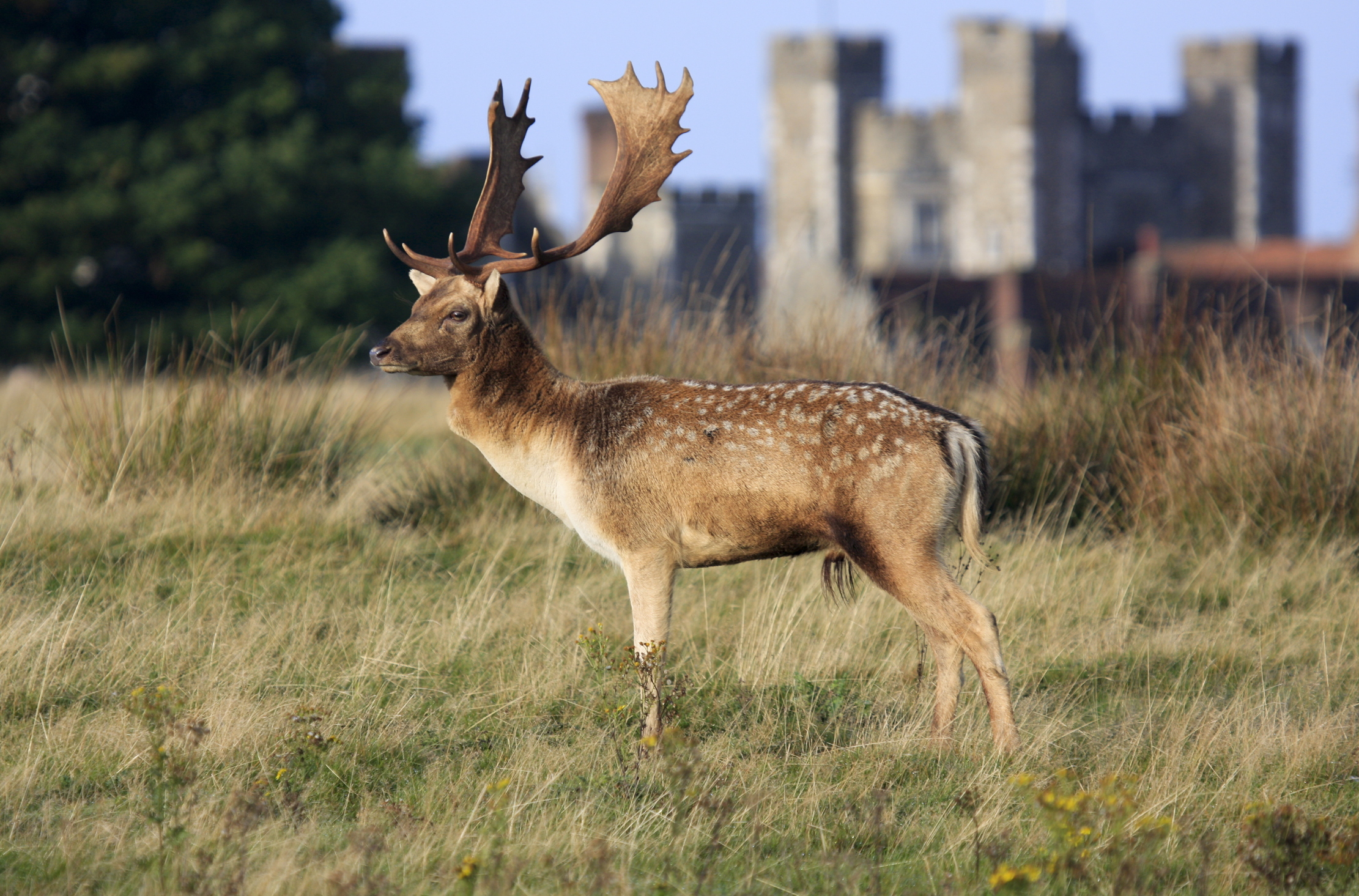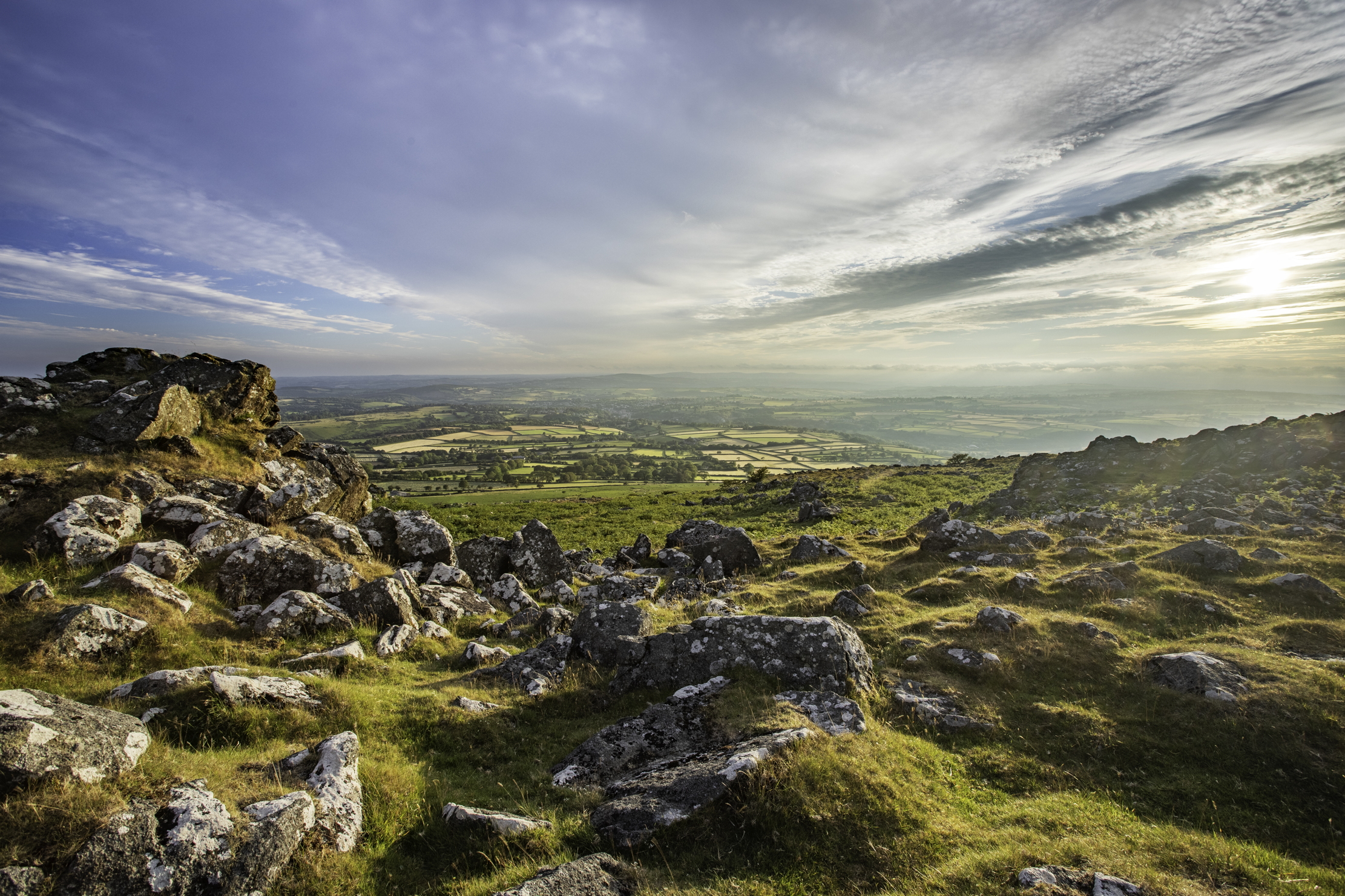John Lewis-Stempel: The deer parks that came to define us
A Roman conception that came to define the topography of England, the deer park was both a status symbol for the arriviste elite and a training ground that would secure our victory at Agincourt.


Oh, deer. Anciently we worshipped the cervid fauna. On an Ice Age cave wall at Creswell Crags in Derbyshire are engravings of deer, painstakingly accurate in their depiction, much as Gothic stonemasons chiselled the sculptures on the west front of Wells Cathedral in Somerset carefully for the glory of God. Any Victorian gentleman worth his relish had a stag’s antlers mounted on the wall, a trophy proof of mastery over the most sought-after beast of the hunt. Today, of course, deer are reduced to the caste of pest, overabundant. They eat trees, which is an unforgivable sin.
’Twas not always thus. The propensity of deer to nibble trees was once considered landscape architecting of the highest order, for deer were the cause and the creators of an English Elysium: the deer park.
‘Emparkment’, by which deer — and other beasts — are confined in generous, safari-sort acreage, has ancient origins. Roman agriculturalist Columella set out the essence of the park in the 1st century AD in De Re Rustica, IX: ‘Wild creatures, such as roe deer, chamois and also scimitar-horned oryx, fallow-deer, and wild boars sometimes serve to enhance the splendour and pleasure of their owners, and sometimes to bring profit and revenue. Those who keep game shut up for their own pleasure are content to construct a park…’
The animals were to be contained by a wall of stone or a wooden fence and the emparked area should include patches of woodland, preferably of oak, because although the ‘creatures have need of grass, so too they require the fruits of oak tree’. The Romans introduced the deer park to these isles only for it to disappear in the Dark Ages, except for subliminal sightings in later Anglo-Saxon times (‘park’ actually derives from the Anglo-Saxon pearroc, ‘a piece of land with a fence around it’).
It was the conquering Normans who triumphed in the landscape art of park-making. After 1066, deer parks became an absolute vogue for the new nobility, who had sequestered almost la toute Angleterre. Whereas the Domesday Book of 1086 recorded 37 deer parks, by 1350 — the heyday of the medieval deer park — there were extant between 1,900–3,200. The deer park was to be found in every English county, amounting to 2% of England’s land surface.
'By hunting, the nobility become as savage as the very beasts they hunt'
The deer parks of old England were — to be crude — fresh meat sources for the arriviste elite, as well as a status symbol and martial training ground. As John Salisbury, a monk, wrote: ‘By hunting, the nobility become as savage as the very beasts they hunt.’ Certainly, Agincourt was won in the deer park. However, the deer park was always a sylvan spectacle; with their 32 teeth, deer gnawed distinct vistas of rolling grassland (‘launds’) interspersed by small stands of oak or solo majestic specimens. The deer, simply put, prevented the reforestation that is the inclination of England below the ‘tree line’ of 2,000ft.
There was more to the park aesthetic; the deer themselves were creatures of doe-eyed beauty or antlered majesty; fallow deer, with their pretty, dotty white patterning, were an intentional introduction for being easy on the eye, as well as relative ease of maintenance. The process of emparkment, with its construction of a surrounding wall, created a sense of disconnection from the real world beyond. Nowhere, perhaps, is this sense of inland ‘fantasy island’ more evident than Richmond Park, where the high brick wall of Charles I creates a womb-like sanctuary of 2,500 acres from crowding, surrounding London.
Exquisite houses, the beauty of Nature, and how to get the most from your life, straight to your inbox.
The Edwardian poet-naturalist Edward Thomas considered Richmond Park ‘only half real, as if it were under a glass-case’. It’s not changed. Last year, I went at midsummer, took a path less travelled to White Ash Pond and met a troop of fallow bucks. It was only us, the water, the spread of ferns, the fringe of oaks, the spread of silence. In London. In 2023.
The deer park is manufactured with Nature, a beautiful rejoinder to any who would simply let the countryside ‘go wild’. This especially English Shangri-La (deer parks in Europe are rare beasts) took a nosedive in the 17th century, when agriculture, especially sheep farming, offered better returns for an increasingly cash-strapped aristocracy. The English Civil War destroyed many, with Charles I selling off parks he owned to raise money and Cromwell’s plebeian followers pillaging others.
A revival in park-making reached its own apogee a century later, in the landscape works of Capability Brown and Humphry Repton. Here, deer were essentially ornamental, even substituted by handsome domestic ‘park’ animals — such as Jacob sheep and White Park cattle — and the sweeps of open lawns and clumped trees manicured.

In a sense, the precision landscape architecture of Brown, Repton et al only clarified the one true and consistent nature of the English deer park from its Roman conception. I realised this on my first ever traverse of Richmond Park, from Roehampton Gate to Petersham Gate. I looked back in the evening light, with its soft lucency, at the ideally placed ponds and copses, the deer-sculpted oaks, the deer-dotted ‘lawns’: the deer park is a truly a walled wonderland.
A paradox: although deer kill trees, the deer park preserved old England’s old oaks. Rather than being cut down for timber, ships, fuel or furniture, parkland oaks thrived as designated shade, shelter and nourishment for deer. Moreover, whereas forest oaks become retarded by competition, selected, protected oaks in the open grassy-grazed landscape of the park enjoy greater stature and longevity.
It is in the deer parks of Norman origin or facsimile that England’s venerable oaks can chiefly be encountered today; about 35% of all oaks in England with a girth greater than 19ft are associated with medieval deer parks. The nation’s single greatest concentration of ancient oaks — and we have more than any country in Europe — lies in the deer park at Blenheim Palace, Oxfordshire, which has 112 specimens. Such old oaks are universes in themselves, abodes to more than 1,000 species of fauna and flora, plus those wonderfully difficult to classify oddities such as lichen, which is half fungus, half algae.
Deer, oaks and glorious vistas. Humans seem currently intent on hopeless pessimism when it comes to the environment. Not the least attribute of the English deer park is that it is a living reminder that, when we work with Nature, semi-domestic and domestic animals, we can create an Eden for us all.
John Lewis-Stempel has twice been crowed winner of the Wainwright prize for nature writing, and was the 2016 BSME Columnist of the Year. His new book, ‘England: A Natural History’, explores 12 distinctive habitats of England

Credit: Getty Images
Mud, glorious mud: Why we should get down and dirty in our wet earth
We loved it as a kid, and we should love it as an adult. Mud is fun to walk through,

'A square yard of estuary mud contains the energy equivalent of 16 chocolate bars': John Lewis-Stempel on the life of the English Estuary
Part water, part earth and a habitat of constant movement, the bleak and desolate estuary environment is an acquired taste.

Credit: Getty Images
Comment: Dartmoor camping case is about conservation and preservation, not denial of access
Alexander Darwall, the landowner at the centre of the legal battle over wild camping on Dartmoor, explains why he has
